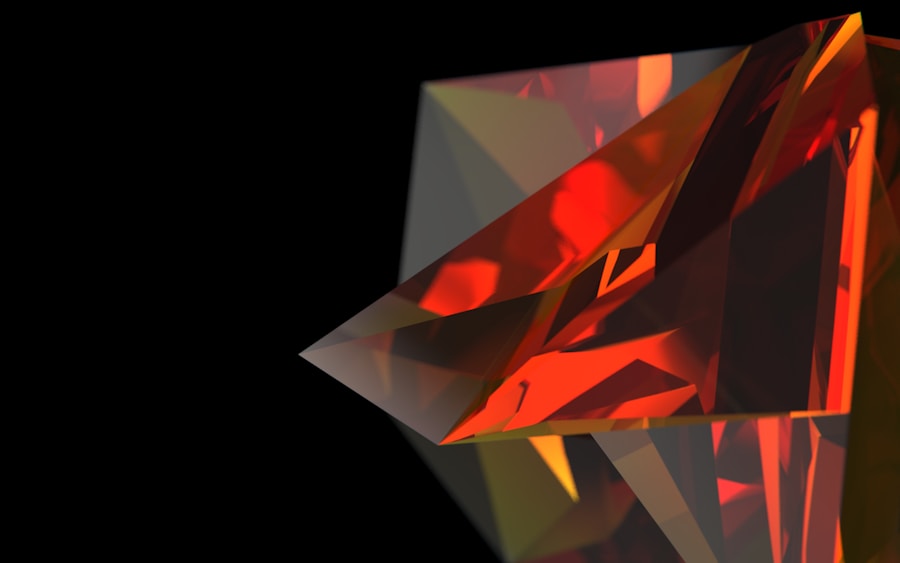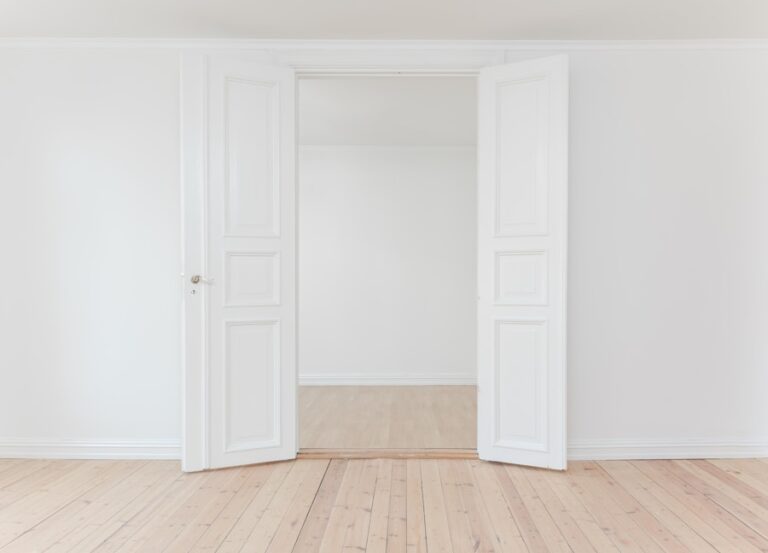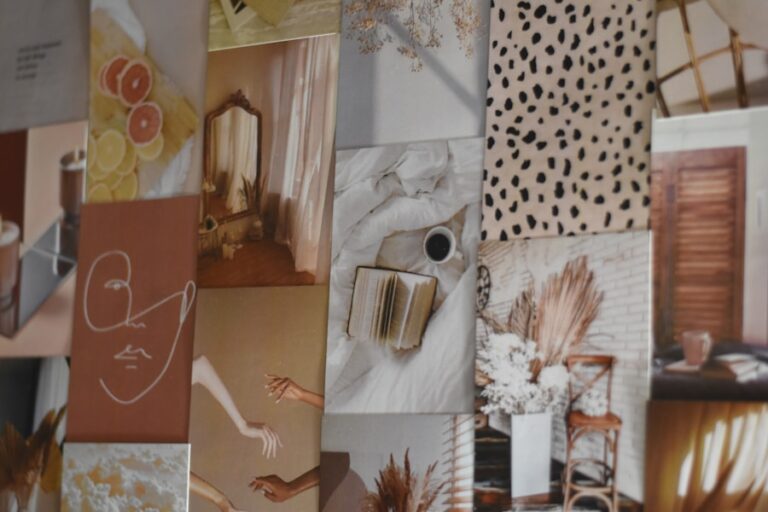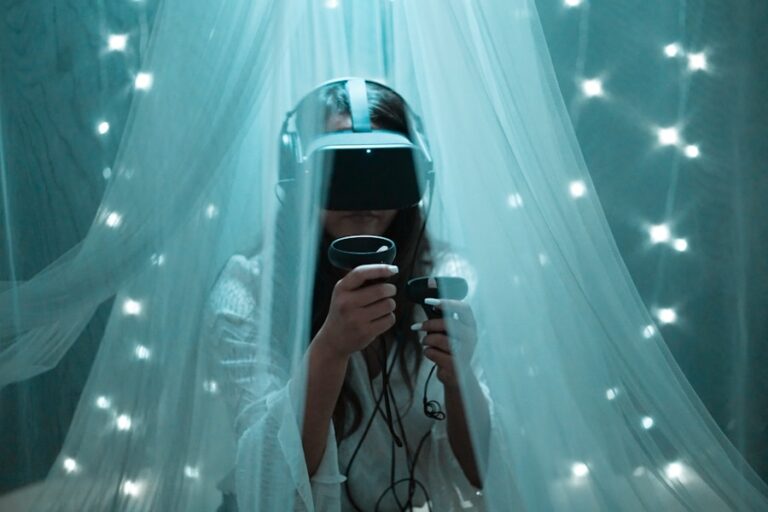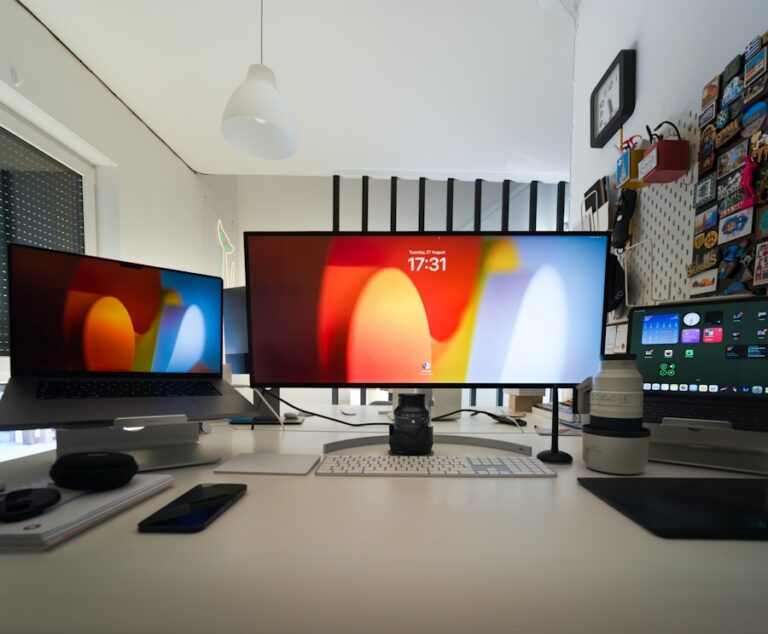Digital Art 101: A Beginner’s Guide to Creating and Sharing Art Online
Digital art is a form of artistic expression that utilizes digital technology as a medium for creating and presenting artwork. This can include anything from digital paintings and illustrations to 3D modeling and animation. Unlike traditional art forms, digital art is created using electronic devices such as computers, tablets, and even smartphones, often with the use of specialized software and tools. The process of creating digital art involves using digital brushes, layers, and various effects to manipulate and transform images and graphics. Digital art can be created using a variety of techniques, including drawing with a stylus on a tablet, using a mouse or touchpad, or even utilizing motion-sensing technology for interactive installations.
Digital art has become increasingly popular in recent years due to its accessibility and versatility. Artists are able to experiment with different styles and techniques without the constraints of traditional art materials, and the ability to easily edit and manipulate artwork allows for greater creative freedom. Additionally, digital art can be easily shared and distributed online, reaching a wider audience than traditional art forms. The use of digital technology also allows for the integration of multimedia elements such as sound and interactivity, creating immersive and engaging experiences for viewers.
Getting Started: Tools and Software for Digital Art Creation
To get started with digital art, you will need the right tools and software to bring your creative vision to life. One of the most essential tools for digital art creation is a graphics tablet, which allows you to draw directly onto a digital surface using a stylus. There are many different models available, ranging from basic entry-level tablets to more advanced options with pressure sensitivity and customizable buttons. Additionally, you will need a computer or mobile device with sufficient processing power and memory to run digital art software effectively.
When it comes to software, there are numerous options available for digital artists, each with its own unique features and capabilities. Adobe Photoshop is one of the most popular choices for digital painting and photo manipulation, offering a wide range of brushes, filters, and editing tools. Other popular software options include Corel Painter, Procreate, and Clip Studio Paint, each with its own strengths and suitability for different artistic styles. It’s important to experiment with different software to find the one that best suits your workflow and artistic preferences. In addition to software specifically designed for digital art, there are also 3D modeling and animation programs such as Blender and Autodesk Maya for artists interested in creating three-dimensional artwork.
Basic Techniques: Learning the Fundamentals of Digital Art
Once you have the necessary tools and software, it’s important to familiarize yourself with the basic techniques of digital art. Understanding concepts such as layers, blending modes, and brush settings is essential for creating high-quality artwork. Layers allow you to work on different elements of your composition separately, making it easier to make changes without affecting the entire image. Blending modes can be used to create various effects by combining layers in different ways, such as creating shadows and highlights or adding texture to your artwork. Brush settings such as size, opacity, and pressure sensitivity can be adjusted to achieve different effects and mimic traditional art mediums.
In addition to mastering the technical aspects of digital art, it’s important to develop your drawing and painting skills. Practice sketching and experimenting with different brushes and techniques to gain a better understanding of how to create realistic textures and lighting in your artwork. Many digital artists also find it helpful to study traditional art principles such as composition, color theory, and perspective, as these concepts are equally important in digital art creation. There are numerous online resources and tutorials available to help you improve your skills, as well as communities of artists who can provide feedback and support as you continue to develop your craft.
Finding Inspiration: Where to Look for Ideas and Creativity
Inspiration can come from many sources, and finding new ideas for your digital art can be an exciting and rewarding process. One of the best ways to find inspiration is by exploring the work of other artists, both within the digital art community and in other artistic disciplines. Visiting art galleries, attending exhibitions, and studying art history can provide valuable insights into different artistic styles and movements, sparking new ideas for your own work. Additionally, social media platforms such as Instagram and Pinterest are great places to discover new artists and artwork that can inspire your creative process.
Nature and the world around us can also be a rich source of inspiration for digital art. Taking walks in natural settings, observing the play of light and shadow, and capturing interesting textures and patterns with a camera can provide endless material for artistic exploration. Many artists also find inspiration in literature, music, and film, drawing on storytelling and emotional themes to inform their artwork. Keeping a sketchbook or digital journal can be a helpful way to record ideas and observations as they come to you, providing a valuable resource for future projects.
Sharing Your Art: Tips for Building an Online Presence and Connecting with Other Artists
Once you have created digital artwork that you are proud of, it’s important to share it with others and build an online presence as an artist. Social media platforms such as Instagram, Twitter, and Facebook are great places to showcase your work and connect with other artists and potential clients. Posting regularly and engaging with your audience can help you build a following and gain exposure for your artwork. It’s also important to use relevant hashtags and keywords to make your work more discoverable by people who are interested in digital art.
In addition to social media, there are many online communities and forums dedicated to digital art where you can share your work, receive feedback, and connect with other artists. Websites such as DeviantArt, ArtStation, and Behance provide platforms for artists to showcase their portfolios and network with others in the industry. Participating in online challenges and competitions can also be a great way to gain exposure for your work and push yourself creatively. Building a strong online presence as an artist can open up opportunities for collaboration, commissions, and even selling your artwork through online marketplaces.
Navigating Copyright and Legal Issues in Digital Art
As a digital artist, it’s important to understand the legal aspects of creating and sharing your artwork online. Copyright law protects original works of authorship, including digital art, from being reproduced or distributed without permission from the creator. It’s important to be aware of your rights as an artist and take steps to protect your work from unauthorized use. This can include adding watermarks or signatures to your artwork, registering your copyright with the appropriate authorities, or using licensing agreements when selling or sharing your work.
It’s also important to respect the rights of other artists when creating digital art. Avoid using copyrighted material without permission or proper attribution, and be mindful of fair use principles when incorporating elements from other sources into your artwork. When sharing your work online, it’s important to clearly communicate your terms of use and licensing agreements to ensure that others understand how they can use your artwork. Being proactive about copyright protection can help you avoid legal issues down the line and ensure that your work is respected by others in the digital art community.
Taking Your Art to the Next Level: Advanced Techniques and Strategies for Growth
As you continue to develop your skills as a digital artist, there are many advanced techniques and strategies that can help you take your art to the next level. Experimenting with new software features, such as 3D modeling or animation tools, can open up new creative possibilities for your artwork. Learning how to use advanced editing techniques such as compositing, photo manipulation, or special effects can also help you create more dynamic and visually striking artwork.
In addition to technical skills, it’s important to develop a unique artistic voice that sets your work apart from others. Experimenting with different styles, themes, and subject matter can help you find your niche as an artist and develop a recognizable aesthetic. Building a strong portfolio of work that showcases your versatility and creativity can open up opportunities for freelance work, commissions, or collaborations with other artists or creative professionals.
Networking with other artists and industry professionals can also be valuable for growth as a digital artist. Attending industry events such as conferences or workshops can provide opportunities to learn from others in the field, gain exposure for your work, and make valuable connections that can help advance your career. Seeking out mentorship or guidance from more experienced artists can also provide valuable insights into the industry and help you navigate the challenges of being a professional digital artist.
In conclusion, digital art is a dynamic and versatile medium that offers endless possibilities for creative expression. By understanding the fundamentals of digital art creation, finding inspiration from diverse sources, building an online presence, navigating legal issues, and continuing to develop advanced techniques, you can take your art to new heights and establish yourself as a successful digital artist. Whether you are just starting out or looking to expand your skills as an experienced artist, there are always new opportunities for growth and exploration in the world of digital art.

